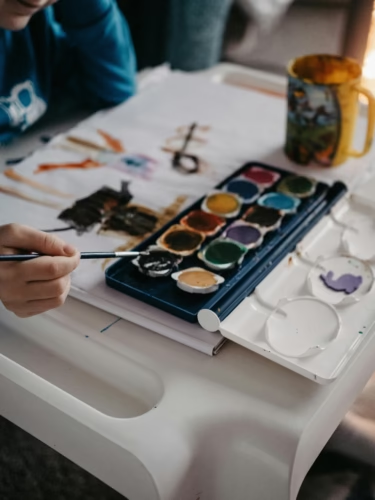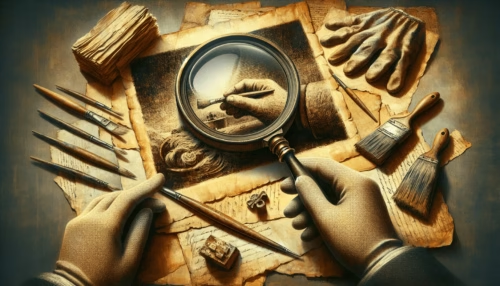What is the essence of art if it cannot be preserved and authenticated? As individuals wander through the vast world of art, it becomes imperative to understand the subtle yet crucial techniques for art print authentication and preservation. Although some might dismiss these tasks as solely the responsibility of art curators or museum professionals, their significance extends far beyond. They influence artists, collectors, and art enthusiasts alike. This thorough exploration of professional techniques for art print authentication and preservation aims to illuminate the vital practices involved and offer insight into this often overlooked facet of the art world.

Table of Contents
Understanding Art Print Authentication
The Importance of Authentication
Authentication distinguishes genuine art from forgery. It involves a systematic process carried out by trained professionals, ensuring that an artwork’s provenance is legitimate. The validation of art prints secures their value, both monetarily and culturally. A proper authentication process affirms the credibility of the artist and the authenticity of their creations. Without authentication, collectors and investors could face significant losses.
Techniques for Authentication
Authentication techniques are diverse, varying from chemical analysis to digital technologies. Traditionally, experts have examined the physical attributes of an art piece, like canvassing materials, paint composition, and signatures. Scientific approaches, such as ultraviolet light and infrared reflectography, also play a role.
Modern technology introduces new dimensions, using techniques such as spectral imaging and artificial intelligence. Experts now rely on comprehensive analysis, comparing signatures and the style of brushwork with catalogs of known works. This multifaceted approach ensures that each print undergoes a thorough verification process.
Preserving Art Prints: Best Practices
Why Preservation Matters
Preservation safeguards history. Art print preservation not only maintains the visual aesthetic of a piece but also ensures its durability through time. Preserved artworks act as cultural relics, embodying the essence of their eras. Without these efforts, such works risk the ravages of time, climate, and improper handling.
Environmental Factors
The environment plays a significant role in the longevity of art prints. Professionals consider temperature, humidity, and light exposure when preserving these delicate pieces. For instance, fluctuations in humidity can lead to the development of mold, while excessive light exposure can cause fading. Controlled environments offer stability, mitigating these potential threats.
Professionals utilize tools like hygrometers and light meters to monitor storage conditions, ensuring optimal settings. Constant vigilance guarantees that the art remains unscathed by its surroundings.
Material Considerations
Different materials require distinct preservation techniques. Paper prints, for instance, are susceptible to acidity and should be stored in acid-free folders and boxes. Utilizing archival-quality materials extends the lifespans of these valuable items. Additionally, handling prints with gloves prevents oils from hands damaging the paper surface.
Framing art prints with UV-protective glass helps shield them from harmful rays. Conservators often employ microclimates within frames, regulating humidity for individual prints, further enhancing their preservation efforts.

The Process of Professional Authentication and Preservation
Expertise in the Field
Expertise in art authentication and preservation demands a comprehensive understanding of both art history and scientific methods. Professionals involved in these practices often hold advanced degrees and draw upon years of experience. Their training allows them to differentiate between subtle nuances that may escape the untrained eye, assessing artworks with unparalleled precision.
Collaborations and Technologies
Collaboration among conservators, historians, and scientists is pivotal. Each brings unique perspectives and skills to the table, ensuring a holistic approach to art preservation and authentication. Advances in technology now allow these collaborations to be more data-driven, providing evidence-based decisions about authenticity and conservation strategies.
Technologies such as 3D imaging and digital archiving have revolutionized how art is both authenticated and preserved, allowing detailed analysis of fine details like texture and underdrawings. Blockchain technology is also emerging as a tool for certifying and tracking provenance.
The Legal and Economic Impact of Authentication and Preservation
Legal Implications
Legal considerations surrounding authentication are significant. Misattributed artworks can lead to lawsuits and financial disputes. Professionals ensure that all documentation is thorough and compliant with international art and trade laws, protecting both owners and artworks legally.
Economic Value
Authenticating and preserving art directly impacts its market value. Verified prints command higher prices and prove more attractive to collectors. They also offer better insurance terms, reducing financial risk and enhancing security for owners.

Upcoming Trends in Art Print Authentication and Preservation
Digital Advancements
The integration of digital technologies represents a growing trend in art authentication and preservation. As the art world becomes increasingly digital, so too do the methods for verifying and conserving art prints.
Sustainable Practices
Sustainability in preservation is gaining momentum. Professionals aim to reduce their carbon footprint while maintaining rigorous standards. This includes using eco-friendly materials and promoting practices that lessen environmental impact.
Conclusion
Authentication and preservation are vital pillars in the realm of art prints. They are not mere acts of examination and care but are significant contributors to cherished cultural heritage. From the advent of digital technologies to sustainable approaches, these evolving techniques ensure that the essence and value of art endure for future generations. By embracing these professional methods, the art community solidifies its commitment to preserving the past as a beacon for the future.
Art enthusiasts must recognize the importance of these practices, appreciating not just the visual beauty of art but the intricate processes that protect and validate it. Now, more than ever, these explorations demonstrate the necessity of skilled professionals in maintaining the timeless allure of art. Enthusiasts and collectors alike are encouraged to immerse themselves further into this nuanced field, ensuring the preservation of their cherished collections.

The Ultimate Guide to Certificates of Authenticity for Artists
Professional Methods for Movie Poster Conservation and Display Guide

